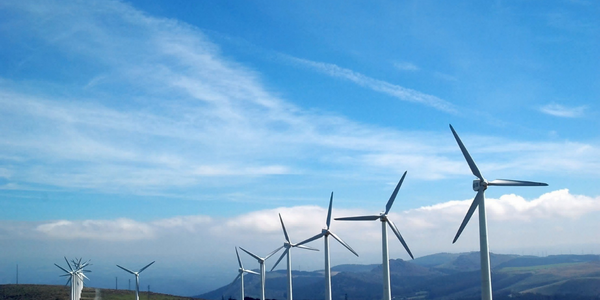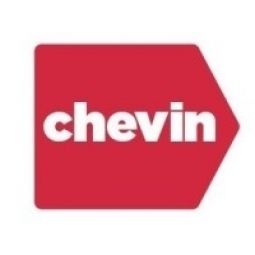技术
- 功能应用 - 计算机化维护管理系统 (CMMS)
- 功能应用 - 车队管理系统 (FMS)
适用行业
- 可再生能源
- 公用事业
适用功能
- 维护
- 采购
用例
- 车队管理
- 交通模拟
关于客户
Pike Electric 总部位于北卡罗来纳州芒特艾里,是美国最大的能源解决方案提供商之一。该公司为配电和输电线路、变电站、工程、采购和施工以及可再生能源项目提供工程、施工和维护。它是风暴恢复领域公认的领导者。 Pike Electric 的客户包括投资者拥有的公用事业公司、电力合作社和独立电力提供商。该公司拥有一支由 10,000 多台设备组成的车队,经营 8 个车间,配备 20 名机械师,并拥有约 40 名现场维护和维修技术人员。
挑战
Pike Electric 是美国最大的能源解决方案提供商之一,在管理其由 10,000 多台设备组成的庞大车队方面面临着挑战。该公司经营 8 个车间,配备 20 名机械师,并拥有约 40 名现场维护和维修技术人员。现有的维护和管理软件系统效率不足以处理庞大的车队和资产信息。该公司需要一种解决方案,该解决方案可以作为所有车队相关信息的中央存储库,并且可以通过笔记本电脑、平板电脑和手机等各种设备进行远程访问。缺乏定制以及与其他系统的集成是现有软件的另一个主要问题。
解决方案
2014 年底,Pike Electric 用 FleetWave 取代了现有的维护和管理软件系统。 FleetWave 是一款基于网络的企业级车队和资产管理软件。它现在作为公司所有车队相关信息的中央存储库。该软件可在 Pike Electric 商店使用,并可在笔记本电脑、平板电脑和手机上远程使用。该公司非常重视根据需要定制和添加功能的能力。用户体验得到了显着改善,用户可以从任何浏览屏幕导出他们想要提取的数据。该软件还可以轻松地与许多不同的系统集成,其中许多定制集成是由 Pike Electric 和 Chevin 构建的。
运营影响

Case Study missing?
Start adding your own!
Register with your work email and create a new case study profile for your business.
相关案例.

Case Study
Remote Monitoring & Predictive Maintenance App for a Solar Energy System
The maintenance & tracking of various modules was an overhead for the customer due to the huge labor costs involved. Being an advanced solar solutions provider, they wanted to ensure early detection of issues and provide the best-in-class customer experience. Hence they wanted to automate the whole process.

Case Study
Vestas: Turning Climate into Capital with Big Data
Making wind a reliable source of energy depends greatly on the placement of the wind turbines used to produce electricity. Turbulence is a significant factor as it strains turbine components, making them more likely to fail. Vestas wanted to pinpoint the optimal location for wind turbines to maximize power generation and reduce energy costs.

Case Study
IoT Solutions for Smart City | Internet of Things Case Study
There were several challenges faced: It is challenging to build an appliance that can withstand a wide range of voltage fluctuations from as low at 90v to as high as 320v. Since the device would be installed in remote locations, its resilience was of paramount importance. The device would have to deal with poor network coverage and have the ability to store and re-transmit data if networks were not available, which is often the case in rural India. The device could store up to 30 days of data.

Case Study
Automation of the Oguz-Gabala-Baku water pipeline, Azerbaijan
The Oguz-Gabala-Baku water pipeline project dates back to plans from the 1970’s. Baku’s growth was historically driven by the booming oil industry and required the import of drinking water from outside of the city. Before the construction of the pipeline, some 60 percent of the city’s households received water for only a few hours daily. After completion of the project, 75 percent of the two million Baku residents are now served around the clock with potable water, based on World Health Organization (WHO) standards. The 262-kilometer pipeline requires no pumping station, but uses the altitude differences between the Caucasian mountains and the capital to supply 432,000 m³/d to the Ceyranbatan water reservoir. To the people of Baku, the pipeline is “the most important project not only in 2010, but of the last 20 years.”

Case Study
Siemens Wind Power
Wind provides clean, renewable energy. The core concept is simple: wind turbines spin blades to generate power. However, today's systems are anything but simple. Modern wind turbines have blades that sweep a 120 meter circle, cost more than 1 million dollars and generate multiple megawatts of power. Each turbine may include up to 1,000 sensors and actuators – integrating strain gages, bearing monitors and power conditioning technology. The turbine can control blade speed and power generation by altering the blade pitch and power extraction. Controlling the turbine is a sophisticated job requiring many cooperating processors closing high-speed loops and implementing intelligent monitoring and optimization algorithms. But the real challenge is integrating these turbines so that they work together. A wind farm may include hundreds of turbines. They are often installed in difficult-to-access locations at sea. The farm must implement a fundamentally and truly distributed control system. Like all power systems, the goal of the farm is to match generation to load. A farm with hundreds of turbines must optimize that load by balancing the loading and generation across a wide geography. Wind, of course, is dynamic. Almost every picture of a wind farm shows a calm sea and a setting sun. But things get challenging when a storm goes through the wind farm. In a storm, the control system must decide how to take energy out of gusts to generate constant power. It must intelligently balance load across many turbines. And a critical consideration is the loading and potential damage to a half-billion-dollar installed asset. This is no environment for a slow or undependable control system. Reliability and performance are crucial.

Case Study
GPRS Mobile Network for Smart Metering
Around the world, the electricity supply industry is turning to ‘smart’ meters to lower costs, reduce emissions and improve the management of customer supplies. Smart meters collect detailed consumption information and using this feedback consumers can better understand their energy usage which in turn enables them to modify their consumption to save money and help to cut carbon emissions. A smart meter can be defined in many ways, but generally includes an element of two-way communication between the household meter and the utility provider to efficiently collect detailed energy usage data. Some implementations include consumer feedback beyond the energy bill to include online web data, SMS text messages or an information display in consumers’ premises. Providing a cost-effective, reliable communications mechanism is one of the most challenging aspects of a smart meter implementation. In New Zealand, the utilities have embraced smart metering and designed cost effective ways for it to be implemented. The New Zealand government has encouraged such a move to smart metering by ensuring the energy legislation is consistent with the delivery of benefits to the consumer while allowing innovation in this area. On the ground, AMS is a leader in the deployment of smart metering and associated services. Several of New Zealand’s energy retailers were looking for smart metering services for their residential and small business customers which will eventually account for over 500,000 meters when the multi-year national deployment program is concluded. To respond to these requirements, AMS needed to put together a solution that included data communications between each meter and the central data collection point and the solution proposed by Vodafone satisfied that requirement.







